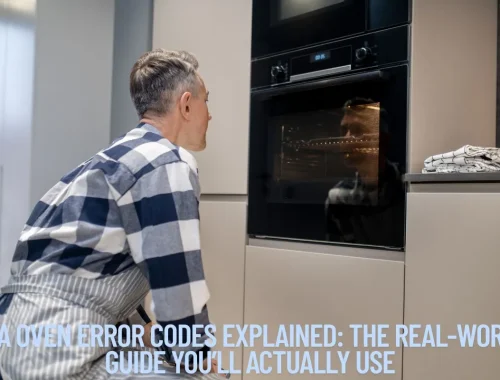
Montecito Country Club Easement Dispute: What Really Happened?
Easement disputes aren’t just legal headaches—they can shake up entire communities. That’s exactly what happened in Montecito, California, where a clash between a luxury country club and a neighboring couple turned into a full-blown legal battle.
If you’ve ever had a disagreement over shared driveways, fences, or pathways, this story will feel very familiar—just with bigger lawns and fancier landscaping.
Table of Contents
ToggleWhat Is an Easement, Anyway?
Let’s break it down in simple terms.
An easement is a legal right that lets someone use another person’s land for a specific purpose—like a shared driveway, utility access, or even a golf cart path. But the landowner still owns the land.
“Easements are legal rights that allow one party to use another party’s property for a specific purpose, without transferring ownership of that property.”
— Underwood Law Firm
(Source: What is an Easement in Gross v. an Easement Appurtenant? | California Partition Law Blog)
In the case of Montecito Country Club, the easement in question allowed the club to use part of a neighboring property for future greenskeeper access or golf cart pathways.
But things didn’t go as planned.
A Peaceful Neighborhood Turns Contentious
Kevin and Jeannette Root, the neighbors who owned the land with the easement, decided to relandscape their property. They added fences, shrubs, and other features—turning a shared-use area into what looked like private land.
To a visitor, it would seem like that stretch of land belonged entirely to the Roots.
But here’s the problem: They didn’t get permission to make those changes.
“Judge Donna Geck found that the defendants Kevin and Jeannette Root did not receive permission from country club principal owner Ty Warner to relandscape and build on the easement.”
— Santa Barbara Patch
(Source: Landscaping Must Be Removed Adjacent To Montecito Country Club)
And that’s where the legal trouble began.
The Country Club Takes Legal Action
Ty Warner, the man behind Montecito Country Club (and Beanie Babies fame), wasn’t too happy about the situation. The landscaping didn’t just beautify the Roots’ yard—it blocked the country club from using the easement space as originally planned.
So, the club filed a lawsuit.
“By adding landscaping features on the easement, the defendants prevented Montecito Country Club from using the property for any future cart path or greenskeeper purposes.”
— Leila Noël, Partner at Cappello & Noël LLP, representing Montecito Country Club
(Source: Santa Barbara Patch)
What the Court Decided
After reviewing the facts, Judge Geck ruled in favor of the Montecito Country Club.
She ordered the Roots to remove the landscaping features, restore the area to its previous condition, and—most importantly—stop interfering with the club’s legal right to use the easement.
“The court indicated it reserves jurisdiction to monitor the progress of the court-mandated removal and restoration efforts until the work is completed.”
— Santa Barbara Patch
This meant the Roots couldn’t just drag their feet or put things back the way they wanted. The court was watching.
Why Easement Disputes Like This Happen
Easement disputes are more common than you’d think, especially in upscale communities where every inch of land feels precious.
“Easement disputes can encompass many issues: One party wants an easement, but the property owner does not; The parties dispute the scope of the easement; The landowner wants to end an existing easement; The landowner sells their property to a new owner.”
— Cadden & Fuller LLP
(Source: FAQ About Easements | California Easements)
In this case, it wasn’t about creating a new easement. The easement already existed. The issue was about its scope—what the club could do on the land—and whether the Roots could block that use with new landscaping.
“When one party blocks access to an easement, disputes can escalate quickly. A common issue is installing a gate or fence that stops neighbors from accessing their land.”
— Shapero Law Firm
(Source: Navigating Easement Disputes in California)
And that’s exactly what the court said happened.
A Personal Perspective: When My Driveway Became a Battlefield
I’ll never forget the time my neighbor parked their RV right across the shared access point between our driveways. It was just for “a couple of days,” but that couple of days turned into two months. My family had to drive on the grass to reach our garage. We were polite at first—then frustrated. It reminded me a lot of the Montecito case.
In the end, we didn’t go to court. A few heartfelt conversations and a copy of our easement agreement did the trick. But I can only imagine how much harder it gets when the land in question is worth millions.
The Bigger Picture: Why This Case Matters
This isn’t just about a country club and a couple of fences. It’s about what happens when people don’t respect legal agreements—or don’t fully understand them.
1. Easements Aren’t Optional
If your land has a legal easement, you can’t treat that space like it’s entirely yours. Ignoring an easement can lead to serious legal consequences—just like the Roots found out.
2. Always Get Permission in Writing
One of the big issues in the Montecito case was that the Roots didn’t get written approval from Ty Warner. They might have assumed their landscaping was harmless, but in the eyes of the law, it wasn’t.
3. Courts Take Easements Seriously
The fact that the court retained jurisdiction even after the ruling shows how seriously judges treat easement interference.
Case Study:
Montecito Country Club, LLC vs. Kevin Root, et. al., Case No.: 21CV02227
This case has become a textbook example of how California courts handle easement enforcement. It shows how powerful easements are—and how courts can intervene when those rights are blocked.
How These Disputes Affect Communities
A peaceful, friendly neighborhood can quickly turn cold when legal letters start flying. Property disputes, especially ones involving high-profile places like country clubs, can impact more than just two parties.
Study Insight:
The Impact of Easement Disputes on Property Values and Community Relations in Affluent Residential Areas
Disputes like Montecito’s can create tension among neighbors, drive down property values, and lead to distrust—even long after the case is resolved.
I’ve had friends in gated communities tell me how one fence dispute led to years of awkward HOA meetings and cold shoulders. Legal victories don’t always repair emotional damage.
What Happens Next?
The Roots were ordered to remove their landscaping, but the court will continue monitoring the situation. Restoration and compliance are key.
Legal Study Insight:
Legal Analysis of Permitted vs. Unpermitted Use on Express Easements in California
This legal study analyzes what counts as “unpermitted use,” like unauthorized structures or landscape features. The Montecito case is often cited in such discussions as a prime example of overstepping legal boundaries.
Lessons for Homeowners
Whether you live in a mansion in Montecito or a cozy suburban home, easement awareness is key.
Here’s what you should always remember:
-
Know your property lines and easement rules before making changes.
-
Talk to your neighbors and get permission in writing if needed.
-
Consult a real estate lawyer if you’re unsure about your rights or responsibilities.
Expert Insight:
The Role of Homeowners Associations and Private Clubs in Easement Management
This study shows how private entities, like Montecito Country Club, often take legal action to protect shared areas. It’s a reminder that even in private communities, shared-use rights must be respected.
Final Thoughts
The Montecito Country Club easement dispute may seem like just another courtroom drama, but it holds important lessons for all of us. Property rights are serious business, and when people forget that—whether intentionally or not—the fallout can be expensive, stressful, and long-lasting.
At the end of the day, good fences don’t always make good neighbors—understanding legal boundaries does.
You May Also Like

CDA Oven Error Codes Explained: The Real-World Guide You’ll Actually Use
August 11, 2025

